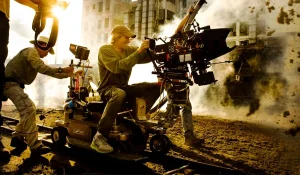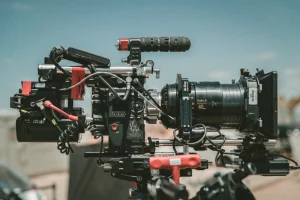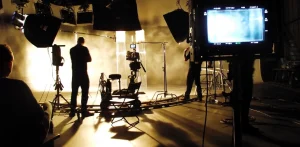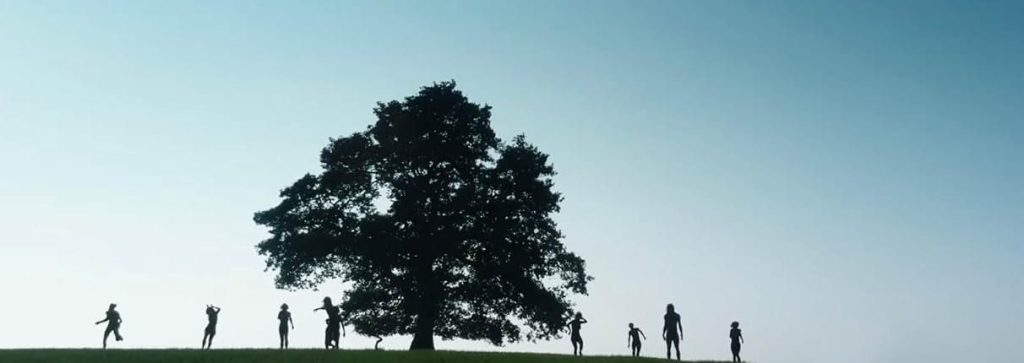
28 Years Later, the sequel to the zombie horror film “28 Days Later (2002),” continues in Alex Garland’s sequel, directed by Danny Boyle. With a runtime of 1 hour and 55 minutes, the film offers a fresh perspective on post-apocalyptic life, highlighting family drama and profound reflections on loss, love, and the fear of death. In addition to offering a fresh take on the horror genre, the use of an iPhone camera during production adds an experimental touch—a bold yet challenging move that raises the question: will this cinematographic style enhance the viewing experience or disrupt the narrative coherence?
Synopsis and Thematic Depth of a Bold Film
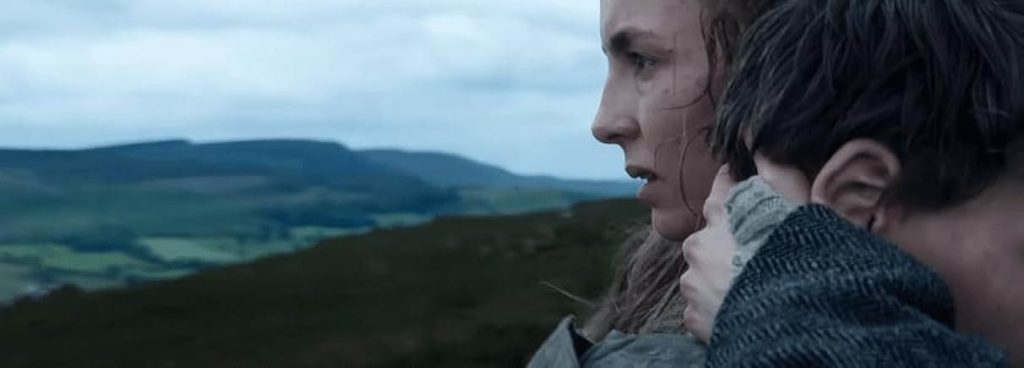
The film opens with a peaceful scene that suddenly turns terrifying—a group of children are watching an episode of Teletubbies on TV when a horde of zombies bursts in and mercilessly slaughters them. From the brutal massacre, only one child named Jimmy manages to escape. He runs to the church to seek refuge with his father, a priest. However, instead of saving his son, the father interprets the zombies’ arrival as the fulfillment of a biblical prophecy. Ultimately, he too becomes a victim of the zombies’ violence, while Jimmy manages to hide. The story then jumps forward 28 years after the horrific event.
It is here that we are introduced to the main character, Spike (Alfie Williams), a 12-year-old boy preparing for his first hunt with his father, Jamie (Aaron Taylor-Johnson). They live on Holy Island, a quarantine island located in Northumberland. On the island, they live with Isla (Jodie Comer), Spike’s mother, who suffers from severe migraines accompanied by hallucinations and can only lie weakly in bed. Spike’s first hunt serves as an epic opening—filled with tension and horror. In this scene, the audience is treated to a variety of zombies: from those with repulsive appearances, obese bodies, slow movements, large sizes, fast movements, to intelligent ones—known as Alphas.
28 Years Later boldly breaks away from the classic zombie film formula, which typically focuses solely on survival themes. Instead, the film takes a different path by exploring a more humanistic theme—a rarity in this genre. The zombies in this film symbolize human behavior that has lost its moral compass, driven solely by anger (rage) and destructive negative emotions.
Spike and Isla’s journey to find a hospital to treat Isla’s illness forms the main thread of the thrilling adventure. Throughout this journey, they encounter various heart-pounding events. Through this journey, audiences are treated to a meticulously crafted visual portrayal of a post-apocalyptic world by Boyle—a world that is bleak, brutal, yet visually captivating.
The Harmony of Technical Elements That Is Truly Remarkable
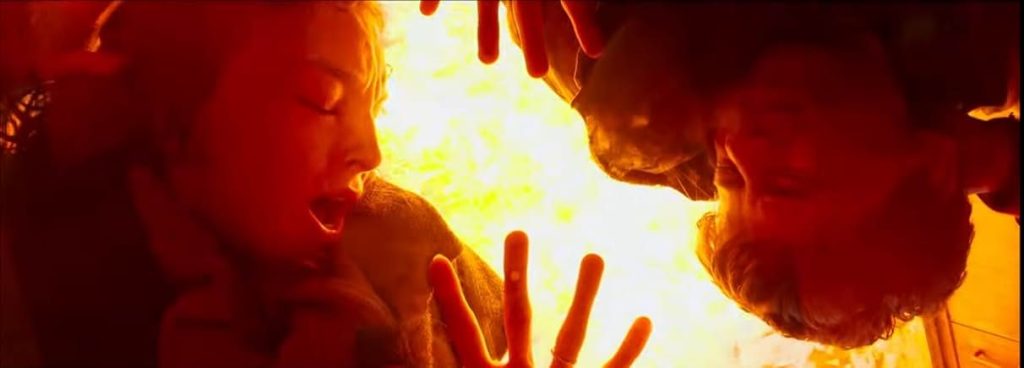
From the very beginning, 28 Years Later impresses with its stunning visual style. Danny Boyle, alongside cinematographer Anthony Dod Mantle, successfully delivers captivating visuals through the use of an iPhone 15 Pro Max camera. Undoubtedly, the visual presentation in this film is one of its main strengths and a promising draw for audiences.
Dynamic cinematography, fast-paced editing, high-contrast lighting, and tense sound design all come together to create the atmosphere of a brutal yet artistic post-apocalyptic world. Each scene presents a harmonious blend of visuals and audio, rich in aesthetic value. The film not only depicts the destruction of the world but also invites viewers to experience the madness, despair, and emptiness that linger within it.
Strong Acting Performances
The actors’ performances in 28 Years Later deserve award recognition. Aaron Taylor-Johnson brings Jamie to life with strength and charm, while Jodie Comer portrays Isla’s physical fragility without compromising her resolve. Ralph Fiennes enriches the film with his complex and mysterious portrayal of Doctor Kelson, while Alfie Williams plays Spike with a natural innocence that perfectly complements his courage and recklessness.
After a series of brutal and tense scenes, 28 Years Later takes the audience into a reflective moment that feels magical, peaceful, and serene. In his encounter with Doctor Kelson at a temple filled with death monuments, Spike is introduced to the concept of “Memento Mori.” This moment becomes a turning point in Spike’s understanding of the meaning of death—not as a terrifying end, but as something worthy of reflection, even celebration. Composed with poetic touches and touching visuals, this scene radiates both beauty and deep sadness.
Ultimately, 28 Years Later emerges as a bold, dark, and captivating film. This work successfully blends zombie horror elements with a family story and a touching message of humanity. The film doesn’t merely discuss survival in the midst of destruction but also presents a narrative about humanity’s ability to adapt and grow in extreme situations while upholding human values. A relevant offering for audiences who appreciate horror, drama, and cinema’s bold experimentation.
After watching 28 Years Later, you might find yourself pondering, “If the world were to collapse today, what would we fight for to decide to keep living?”
Read reviews of horror films and others here.


